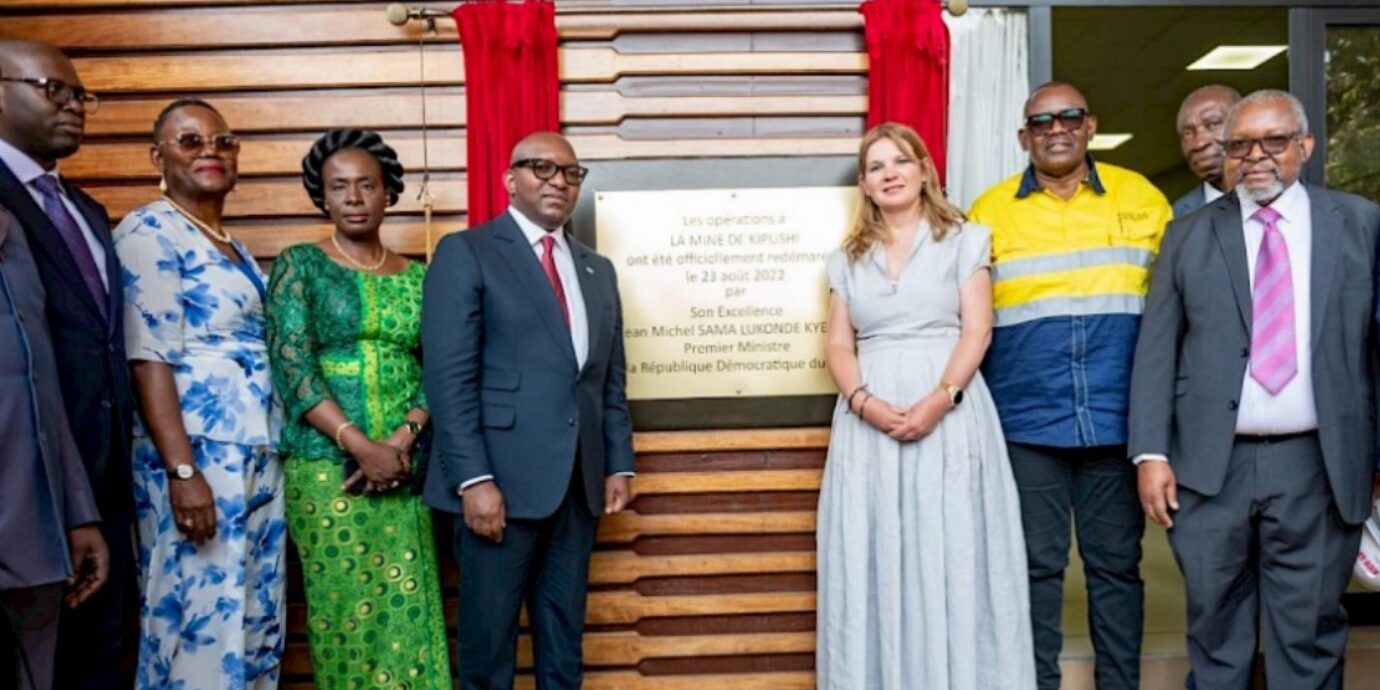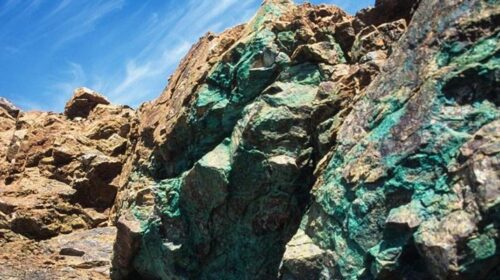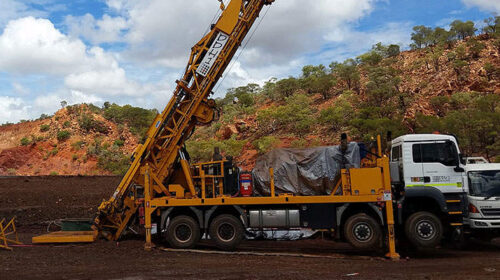Ivanhoe and Gécamines host ceremony commemorating the start of construction activities at the historic Kipushi Mine
Production from Kipushi’s ultra-high-grade Big Zinc deposit targeted for late 2024, marking one hundred years
since the mine first opened.
Ceremony attended by DRC Prime Minister and other DRC national and provincial dignitaries.
Memorandum of understanding signed with Province of Haut-Katanga to study upgrade of the Kipushi border crossing.
KIPUSHI, DEMOCRATIC REPUBLIC CONGO – Ivanhoe Mines (TSX: IVN; OTCQX: IVPAF) President Marna Cloete is pleased to announce that Kipushi Corporation SA (KICO), a joint venture between Ivanhoe and DRC state-owned mining company Gécamines, recently hosted a breaking-ground ceremony to commemorate the start of construction of the processing plant at the historic Kipushi zinc-copper-germanium-silver mine. In addition, Ivanhoe signed a memorandum of understanding (MOU) with the provincial government of Haut-Katanga to study options for upgrading the DRC-Zambia border crossing in the town of Kipushi for commercial imports and exports.
The ground-breaking ceremony was attended by His Excellency Jean-Michel Sama Lukonde, Prime Minister of the Democratic Republic of the Congo, Her Excellency Adèle Kayinda Mahina, Minister of State and Minister of Portfolio, Her Excellency Antoinette N’Samba Kalambayi, Minister of Mines, members of the provincial government of the Haut-Katanga Province and other national, provincial and local dignitaries, in addition to representatives from Ivanhoe, Gécamines and the town of Kipushi.
Watch a short video of the breaking-ground ceremony:
The delegation was presented with the development plan for returning the Kipushi mine to production by late 2024 – one hundred years since it was first opened and 30 years since it was placed on care and maintenance.
The ceremony follows the outstanding results of the Kipushi 2022 Feasibility Study, announced in February 2022, as well as the agreement signed between Ivanhoe Mines and Gécamines to bring the Kipushi mine back into production.
Jean-Michel Sama Lukonde, Prime Minister of the Democratic Republic of the Congo (right) and the government delegation were welcomed by Marna Cloete, President of Ivanhoe Mines (centre), and Louis Watum, General Manager of KICO (left).

The Kipushi 2022 Feasibility Study evaluates the development of an 800,000-tonne-per-annum concentrator and underground mine, producing on average of 240,000 tonnes per annum of zinc contained in concentrate over a 14-year life of mine. The successful commencement of commercial production would establish Kipushi as the world’s highest-grade major zinc mine, with an average head grade of 36.4% zinc over the first five years of production.
Existing, rehabilitated surface and underground infrastructure allow for significantly lower capital costs than comparable development projects. The estimated pre-production capital cost, including contingency, is $382 million. This infrastructure also allows for a relatively short construction timeline of two years, with the principal development activities being the construction of a conventional concentrator facility and supporting infrastructure, together with the restart of mining activities underground.
At a zinc price of $1.40 per pound, the after-tax net present value (NPV) at an 8% real discount rate is $1.4 billion, with an after-tax real internal rate of return (IRR) of 54%. The current spot zinc price is $1.46 per pound.
Life-of-mine average C1 cash costs of $0.65 per pound of zinc are expected to rank Kipushi, once in production, in the second quartile of the cash cost curve for zinc producers globally.
Ordering of long-lead equipment is underway and early construction activities have commenced. Financing and offtake discussions, including a pre-payment facility of $250 million, are well advanced with several interested parties.
Unveiling the ceremonial plaque: (L-R) Jacques Kyabula Katwe, Governor Haut-Katanga Province; Antoinette N’Samba Kalambayi, Minister of Mines of the Democratic Republic of Congo; Adèle Kayinda Mahina, Minister of State and Minister of Portfolio of the Democratic Republic of Congo; Jean-Michel Sama Lukonde, Prime Minister of the Democratic Republic of Congo; Marna Cloete, President of Ivanhoe Mines; Louis Watum, General Manager of KICO; Calixte Mukasa, National Member of Parliament; and Alphonse Kaputo Kalubi, Chairman of Gécamines.
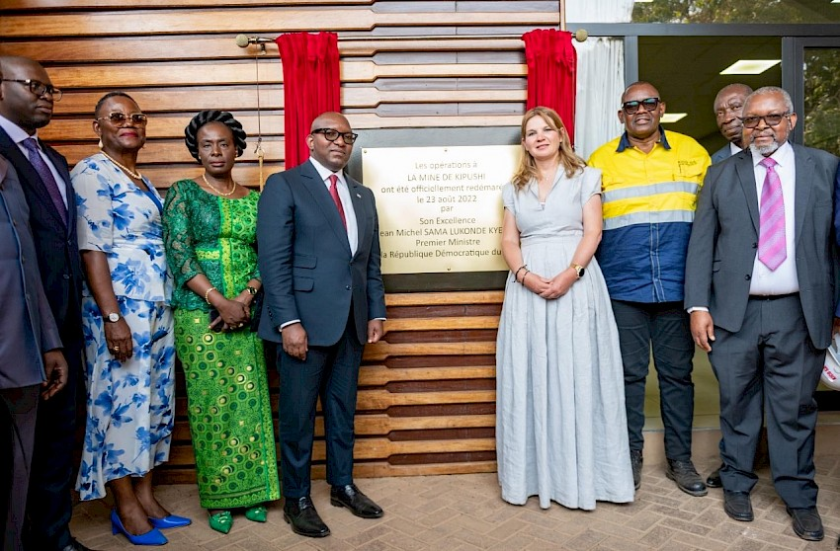
Breaking of ground: (L-R) Alphonse Kaputo Kalubi, Chairman of Gécamines; Olivier Binyingo Chairman of KICO; Calixte Mukasa, National Member of Parliament; Jean-Paul Mwenge, Provincial Member of Parliament for Haut-Katanga Province; Marna Cloete, President of Ivanhoe Mines; Jean-Michel Sama Lukonde, Prime Minister of the Democratic Republic of Congo; Jacques Kyabula Katwe, Governor of Haut-Katanga Province; Adèle Kayinda Mahina, Minister of State and Minister of Portfolio of the Democratic Republic of Congo; Antoinette N’Samba Kalambayi, Minister of Mines of the Democratic Republic of Congo; Grand Chef Kaponda, Paramount Chief of the Kaponda Chiefdom; and Louis Watum, General Manager of KICO.

Ivanhoe Mines’ President, Marna Cloete commented:
“Kipushi is exceptional, not only because of the renowned Big Zinc deposit, which is one of the world’s richest orebodies, but more importantly because of the people of Kipushi and the unique partnerships that make today’s ceremony possible. I would like to express our sincere thanks to His Excellency the Prime Minister and the assembled dignitaries, our partners Gécamines, the hard-working employees of KICO, and the people of Kipushi town for being the architects of the future for the world-class Kipushi Mine. We now have our sights clearly set on the re-start of production in 2024. The re-birth of the historic Kipushi Mine will be a great achievement for Ivanhoe Mines, our partners and shareholders, and the Democratic Republic of Congo.”
His Excellency Jean-Michel Sama Lukonde, DRC Prime Minister, commented:
“It is with great satisfaction we now see the path toward the revival of this historic mine. Kipushi started production almost one hundred years ago in 1924, and I believe today is a sign of things to come. We can make Kipushi great again! This will benefit not only KICO, but also the citizens of Kipushi and the entire Democratic Republic of Congo. This partnership also aligns well with the vision of our President, His Excellency Mr. Felix Tshisekedi.”
Memorandum of understanding signed with Province of Haut-Katanga to study the upgrade of the Kipushi border crossing
The Kipushi Mine is strategically located less than one kilometre from the DRC-Zambia border, which will be the gateway for Kipushi’s products to global export markets.
On August 24, 2022, Ivanhoe Mines and the Province of Haut-Katanga signed a MOU concerning the construction of a dedicated, commercial border post for the Kipushi Mine, together with the upgrading of the existing border post in the town of Kipushi, which currently only serves local traffic between DRC and Zambia.
The MOU signing ceremony was attended by (L-R), His Excellency Miguel Katemb, Minister of Infrastructure for Haut-Katanga Province; Jacques Kyabula Katwe Governor of Haut-Katanga Province; Marna Cloete, President, Ivanhoe Mines and Olivier Binyingo, Chairman of KICO and Vice President, Public Affairs, Ivanhoe Mines.
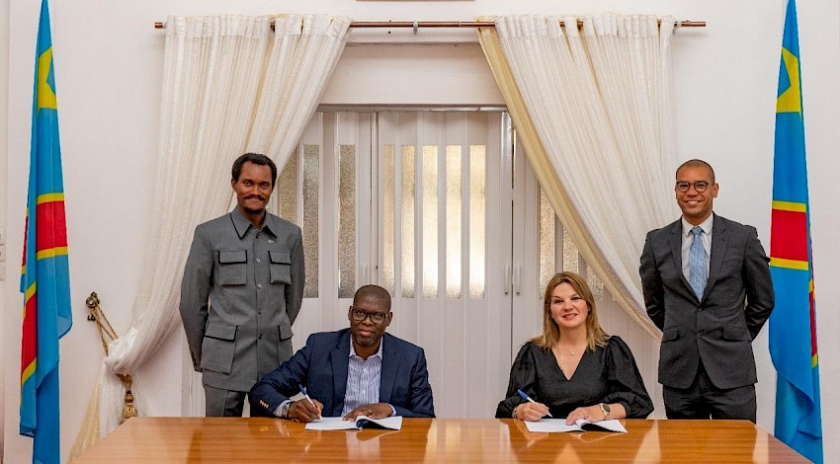
This new commercial border crossing will provide a significant advantage to the Kipushi Mine as a direct means of importing materials and consumables, as well as clearing customs and exporting products from the mine, and will provide socio-economic benefits to the town and Province of Haut-Katanga.
The opening of the Kipushi border crossing also is anticipated to provide ancillary benefits to Kamoa-Kakula, where work is underway to improve processes for clearing copper products for export and to open alternative export border crossings between the DRC and Zambia, in order to alleviate congestion at the existing border crossings at Kasumbalesa and Sakania in Haut-Katanga Province.
The re-birth of a mining legend; Kipushi is a significant past producer of copper, zinc, germanium and precious metals
The Kipushi Mine has a long and storied history as a major producer of copper and zinc. Built and then operated by Union Minière for 42 years, Kipushi began mining a reported 18% copper deposit from a surface open pit in 1924. It was the world’s richest copper mine at the time. The Kipushi Mine then transitioned to become Africa’s richest underground copper, zinc and germanium mine. State-owned Gécamines gained control of Kipushi in 1967 and operated the mine until 1993, when it was placed on care and maintenance due to a combination of economic and political factors.
Over a span of 69 years, Kipushi produced a total of 6.6 million tonnes of zinc and 4.0 million tonnes of copper from 60 million tonnes of ore grading 11% zinc and approximately 7% copper. It also produced 278 tonnes of germanium and 12,673 tonnes of lead between 1956 and 1978. There is no formal record of the production of precious metals as the concentrate was shipped to Belgium and the recovery of precious metals remained undisclosed during the colonial era. However, drilling by Ivanhoe Mines has encountered significant silver values within Kipushi’s current zinc- and copper-rich deposits.
Germanium is considered a technology-critical element, and is used as a semiconductor in transistors and many other electronic devices and technologies.
Currently, major end uses for germanium include fibre-optic systems, infrared optics, high-efficiency photovoltaic solar panels, and light-emitting diodes (LEDs). Germanium compounds are also used for polymerization catalysts and have most recently found use in the production of nanowires, as well as in the development of ultrafast quantum computing applications and communication technologies.
Most of Kipushi’s historical production was from the Fault Zone, a steeply-dipping ore body rich in copper and zinc that was initially mined as an open pit. The Fault Zone extends to a depth of at least 1,800 metres below surface, along the intersection of a fault in carbonaceous dolomites.
In 1924 Kipushi began mining 18% copper from a surface open pit, before transitioning to Africa’s richest underground copper and zinc mine. This picture shows the Kipushi open pit in November 1928.
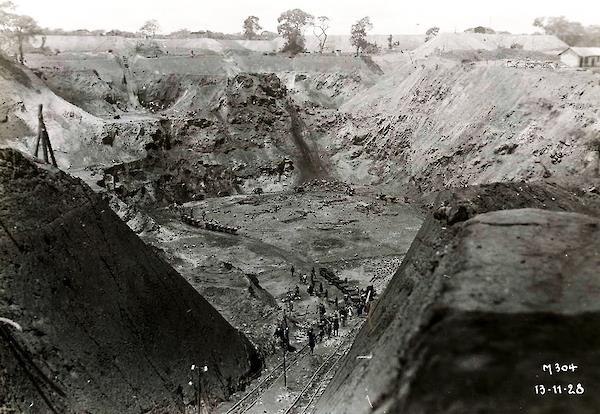
Before Kipushi was idled in 1993, Gécamines discovered the Big Zinc deposit at a depth of approximately 1,250 metres below surface and adjacent to the producing Fault Zone. The Big Zinc Deposit has not been mined and is the initial target for production as outlined in the 2022 Feasibility Study.
Since acquiring its interest in the Kipushi Mine in 2011, Ivanhoe’s drilling campaigns have upgraded and expanded the mine’s zinc-rich Measured and Indicated Mineral Resources by more than double to an estimated 11.78 million tonnes grading 35.34% zinc, 0.80% copper, 23 grams/tonne (g/t) silver and 64 g/t germanium, at a 7% zinc cut-off, containing 9.2 billion pounds of zinc, 8.7 million ounces of silver and 24.4 million ounces of germanium.
In addition, Ivanhoe’s drilling expanded Kipushi’s copper-rich Measured and Indicated Mineral Resources to an additional 2.29 million tonnes at grades of 4.03% copper, 2.85% zinc, 21 g/t silver and 19 g/t germanium, at a 1.5% copper cut-off – containing 144 million pounds of copper.
The Kipushi Mine, once in operation, will be powered by clean, renewable hydro-generated electricity and is set to be among one of the world’s lowest Scope 1 and 2 greenhouse gas emitters per tonne of zinc metal produced.
Picture of the headframes for Kipushi shafts 1, 2 and 3, and the Kipushi concentrator in February 1966.
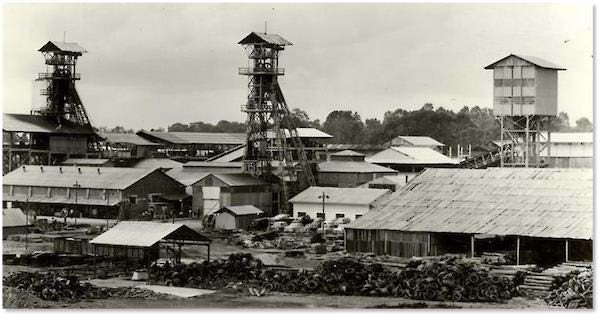
69 total views , 3 views today


